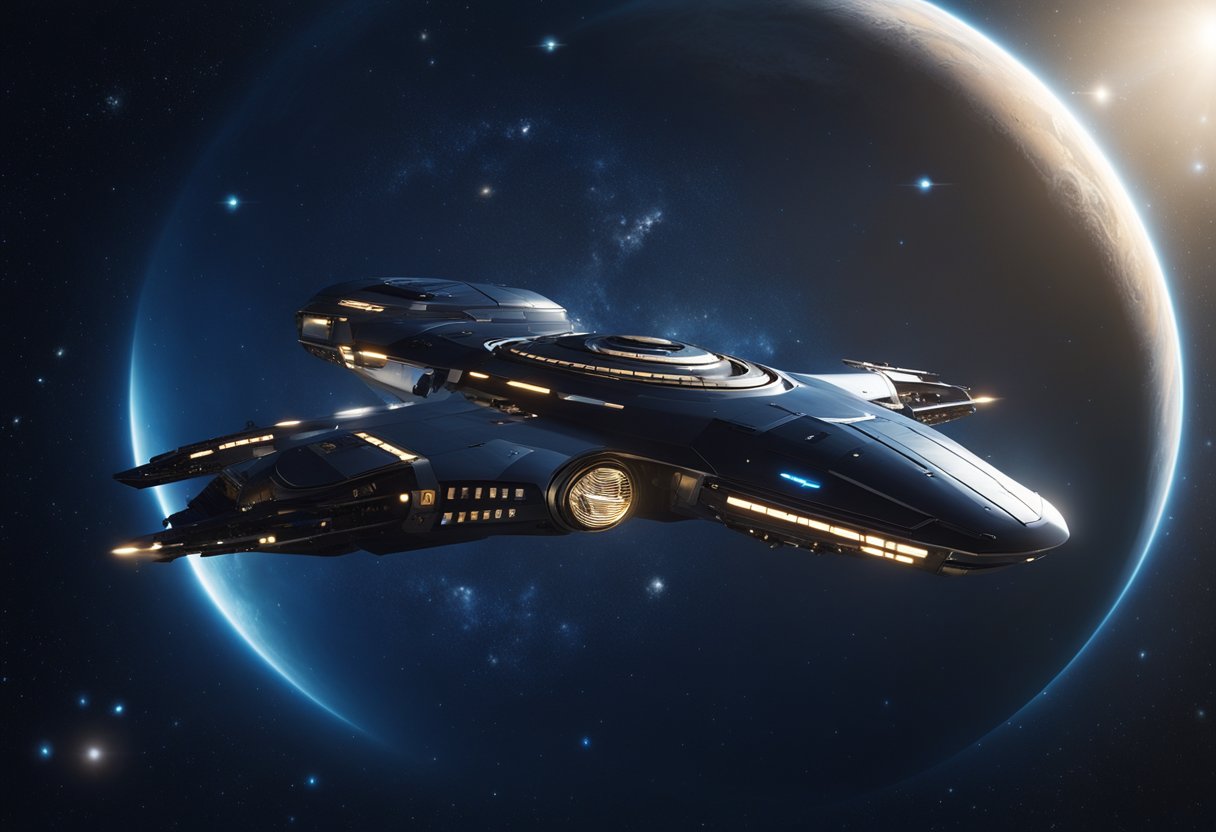
Deep space vehicles are an essential component of humanity’s quest to explore beyond our terrestrial bounds. They are engineered marvels designed to travel to destinations such as the Moon, Mars, and potentially further into our solar system. With each mission, these vehicles must withstand the harsh conditions of space, from extreme radiation to the vacuum and cold of space, while providing safe transport for astronauts and valuable scientific instruments.
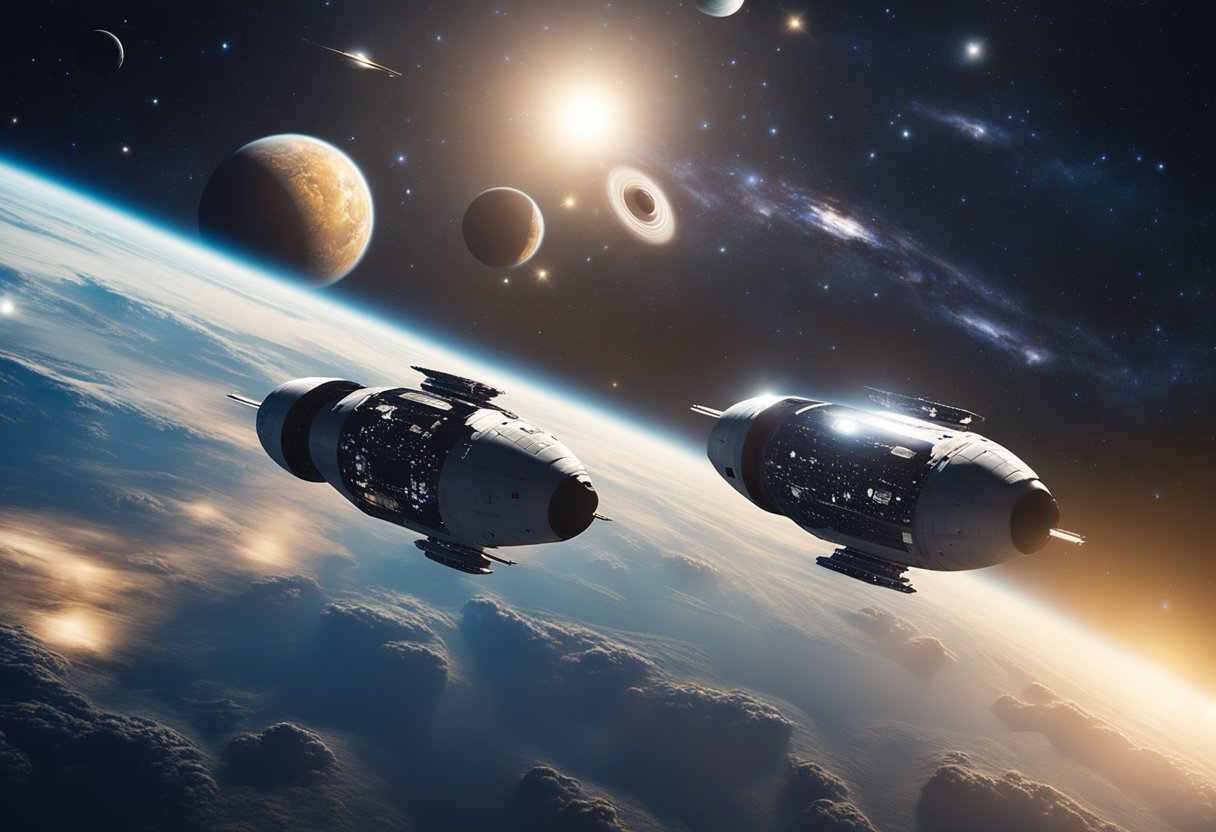
Advancements in propulsion systems, such as the revolutionary rotating detonation rocket engine, have the potential to significantly improve the efficiency and capabilities of these spacecraft. Vehicles like NASA’s Orion are at the forefront of this deep space exploration, with designs intended to sustain human life during long-duration missions. As we stand on the cusp of a new era in space travel, these vehicles play a pivotal role in our ability to extend human presence beyond the Earth, serving both exploratory and potentially commercial purposes.
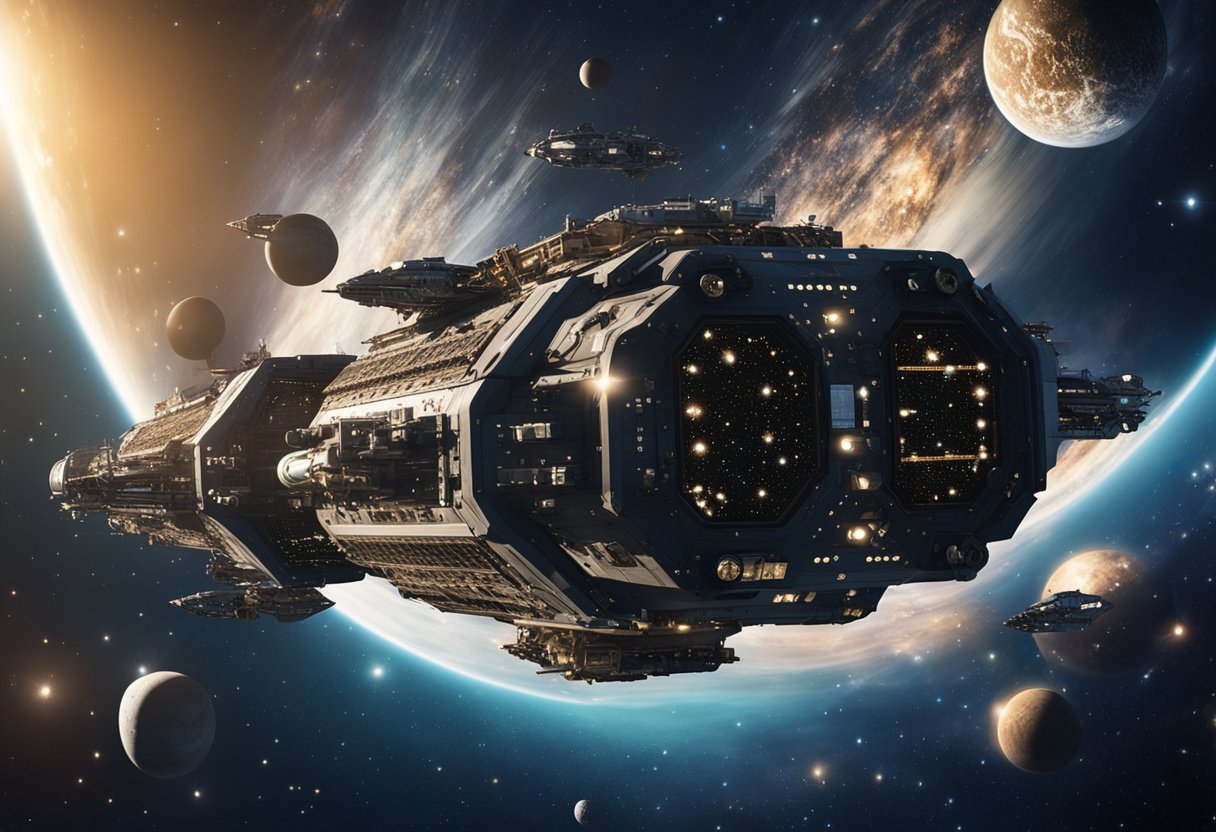
Within the annals of space exploration, we’ve observed a progressive evolution of deep space vehicles, from the mammoth Saturn V launcher that propelled Apollo missions to the innovative modular designs envisioned for future exploration.
The Apollo programme remains a defining period in space exploration, marked by the historic use of the Saturn V rocket, which has etched its name as the pinnacle of our early efforts in space travel. Not merely content with low Earth orbit (LEO), these missions stretched the capabilities of humankind, successfully placing astronauts on the Moon and cementing NASA‘s role as a vanguard in space exploration.
The conclusion of the Apollo era invited an era of space shuttles, which served as workhorse vehicles for multiple tasks including satellite deployment and servicing the International Space Station. Notable in their own right, these shuttles laid the groundwork for intricate spacecraft designs and operational procedures. Our endeavour to reach further into space led to the conceptualisation of the Constellation Program. Envisioned as NASA’s modern successor to the Apollo and Shuttle programs, the Constellation Program aimed to facilitate human exploration of the Moon and Mars.
In advocating for our sustained presence in space, we must acknowledge and respect these pioneering missions and technologies that lay the pathways to our current and future journeys among the stars. For instance, SpaceVoyageVentures.com represents the burgeoning interest in space tourism, a concept that was once an aspect of our collective imagination, now drawing ever closer to reality.
In recent developments, deep space exploration has seen significant advancements with the introduction of cutting-edge vehicles designed for extended missions beyond low Earth orbit. These are engineered to facilitate a range of complex missions and pave the way for future space exploration.
Since its conception, the Orion spacecraft has been pivotal in NASA’s deep space exploration goals. Built by Lockheed Martin, the Orion represents a Multi-Purpose Crew Vehicle (MPCV) designed to carry astronauts to destinations far from Earth, encapsulating both a crew module for astronaut habitation and a service module packed with life-support systems and propulsion. This spacecraft stands out as NASA’s new spacecraft, tailored for ventures into deep space, with capabilities to sustain human life during long-duration missions and safely return the crew to Earth.
The Space Launch System (SLS) is a cornerstone in modern space exploration. As the most powerful rocket ever developed by NASA, it possesses unprecedented thrust capable of sending the Orion spacecraft, astronauts, and cargo to the moon and beyond. The SLS is not only a testament to our modern engineering capabilities but also the backbone for missions aimed at establishing a sustainable human presence on lunar soil and preparing for future Mars expeditions.
Our era has witnessed a significant shift with the private sector emerging as a critical player in space exploration. Companies like SpaceX have introduced game-changing technology with their Starship vehicle, which is instrumental for both crewed and cargo missions to Mars, offering a cost-effective and frequent launch solution. The private sector’s innovations have transformed spacecraft into more efficient and reliable vessels, supporting a broad range of operations including science and research in microgravity environments. As these commercial entities continue to collaborate with governmental agencies, the future for deep space vehicles looks robust, expanding possibilities for space exploration and potential tourism documented by sites like SpaceVoyageVentures.com.
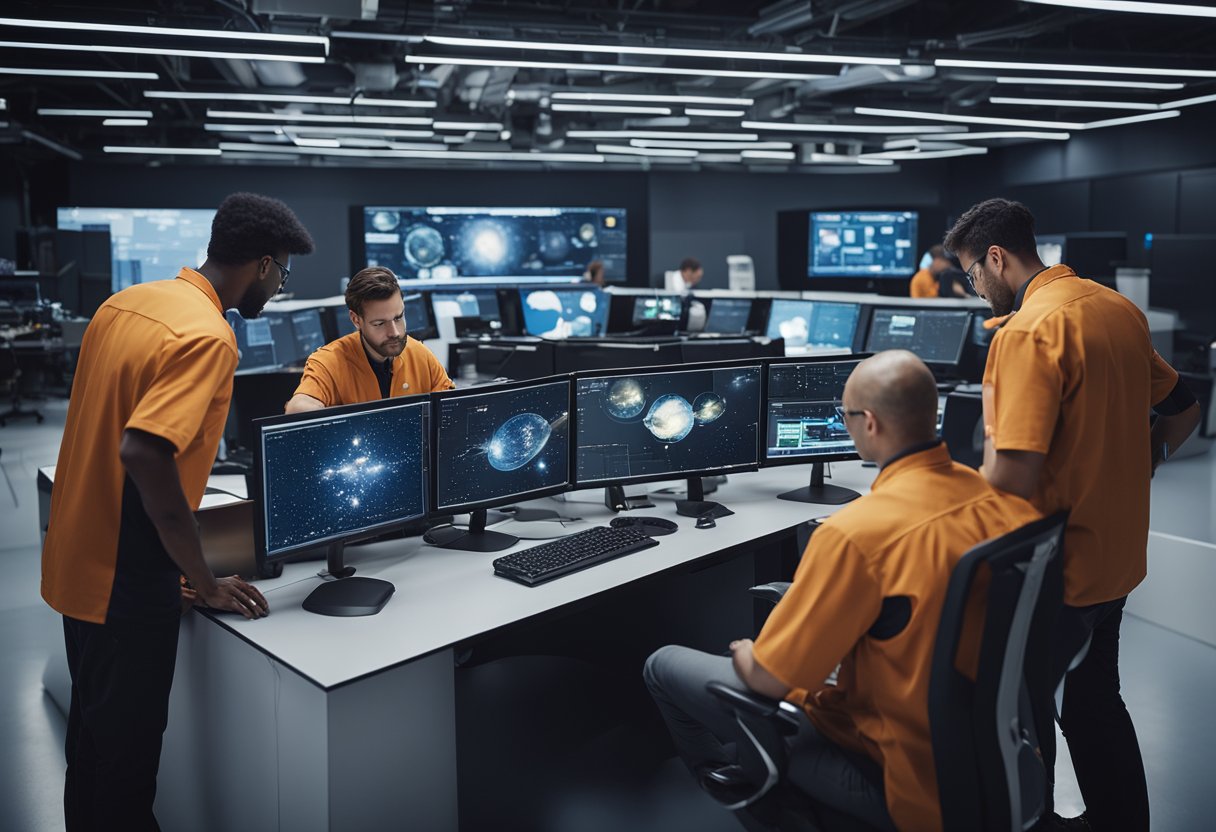
In the domain of deep space exploration, the vehicles we engineer must meet the unique challenges posed by the harsh environment of space. This includes considerations for propulsion, durability of materials, and thermal protection.
Our propulsion systems are at the heart of deep space vehicles, providing the necessary thrust to navigate the cosmos. The engines we select are typically high-efficiency options, such as ion thrusters, which use electric fields to accelerate ions and generate thrust. For missions requiring higher thrust, chemical propulsion remains a reliable choice, using specific fuels that offer an optimal balance of weight to thrust ratio.
The materials and structures that compose our deep space vehicles are carefully chosen to withstand extreme conditions. Techniques like friction stir welding are often employed to ensure strong and durable joints without compromising the integrity of the materials. Advances in 3D printing are also integrated, allowing for the creation of complex components that were previously unattainable, often resulting in significant savings in mass and cost.
As vehicles re-enter atmospheres or get close to stars, thermal protection becomes critical. The heat shield is a key component, often employing materials such as AVCOAT, an ablative material that can withstand intense heat. It is designed to gradually erode away, absorbing and dissipating the extreme temperatures encountered during re-entry to protect the integrity of the spacecraft.
The design and engineering of deep space vehicles are intricate tasks that necessitate a nuanced understanding of various scientific and engineering principles. As we progress, we continually refine our techniques and materials, ensuring our vehicles can safely carry out their missions.
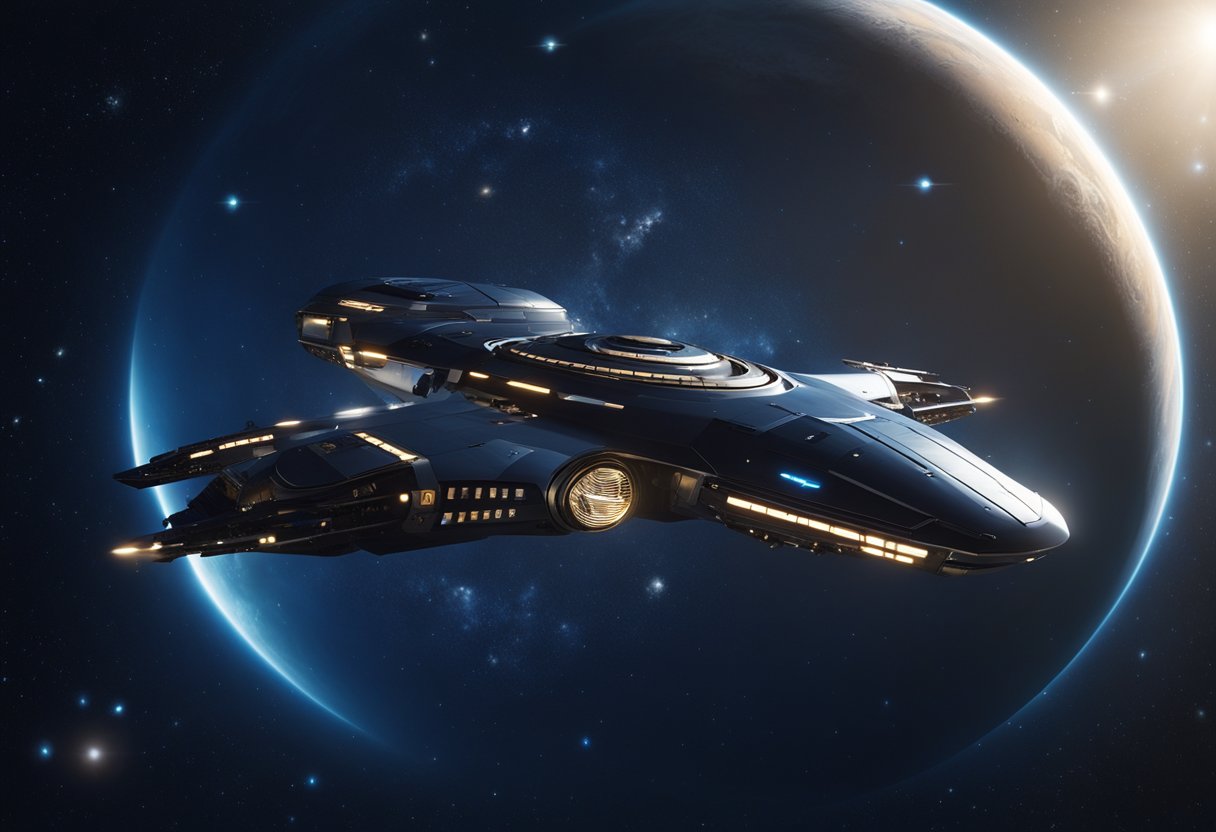
In our examination of deep space vehicles, we consider a range of mission profiles encompassing various destinations within our solar system. The vehicles tailored for these missions differ greatly in design, reflecting the unique challenges each mission presents.
Our engagement with low-earth orbit (LEO) is foundational to human spaceflight. Here, vehicles frequently rendezvous with the International Space Station (ISS), serving as a testbed for technologies and as a stepping stone for longer-duration missions. They provide crucial experience in the challenges of microgravity environments while operating within the protective embrace of Earth’s magnetic field.
Travelling beyond LEO, we’ve set our sights on the Moon’s orbit and surface. Lunar missions serve as a second frontier in our deep space quest, establishing a presence in cislunar space. The Space Launch System mentioned in one of our search results, suggests that the next generation of rockets and habitats will enable us to sustain human activities both in lunar orbit and on the Moon itself.
Mars represents our longer horizon, with missions planned for both its orbit and surface. Vehicle designs consider the extreme distance, communication delays, and harsh surface conditions. A habitat designed for deep space exploration articulates our ability to transport and sustain human life on long-duration missions to Mars and potentially its moons, Phobos and Deimos.
Though Venus is often an overlooked destination, a flyby around our sister planet can serve as a valuable opportunity for gravitational assists or as a scientific inquiry in its own right. As we plan for Venus flybys or even ventures to more distant deep space destinations, our vehicles need to withstand severe thermal and atmospheric challenges.
Each of these mission profiles plays an integral role in our collective journey through the cosmos. As such, we are witnessing an era of spaceflight where traditional boundaries are being pushed, and new horizons in space tourism are emerging, as outlined on the burgeoning platform, SpaceVoyageVentures.com.
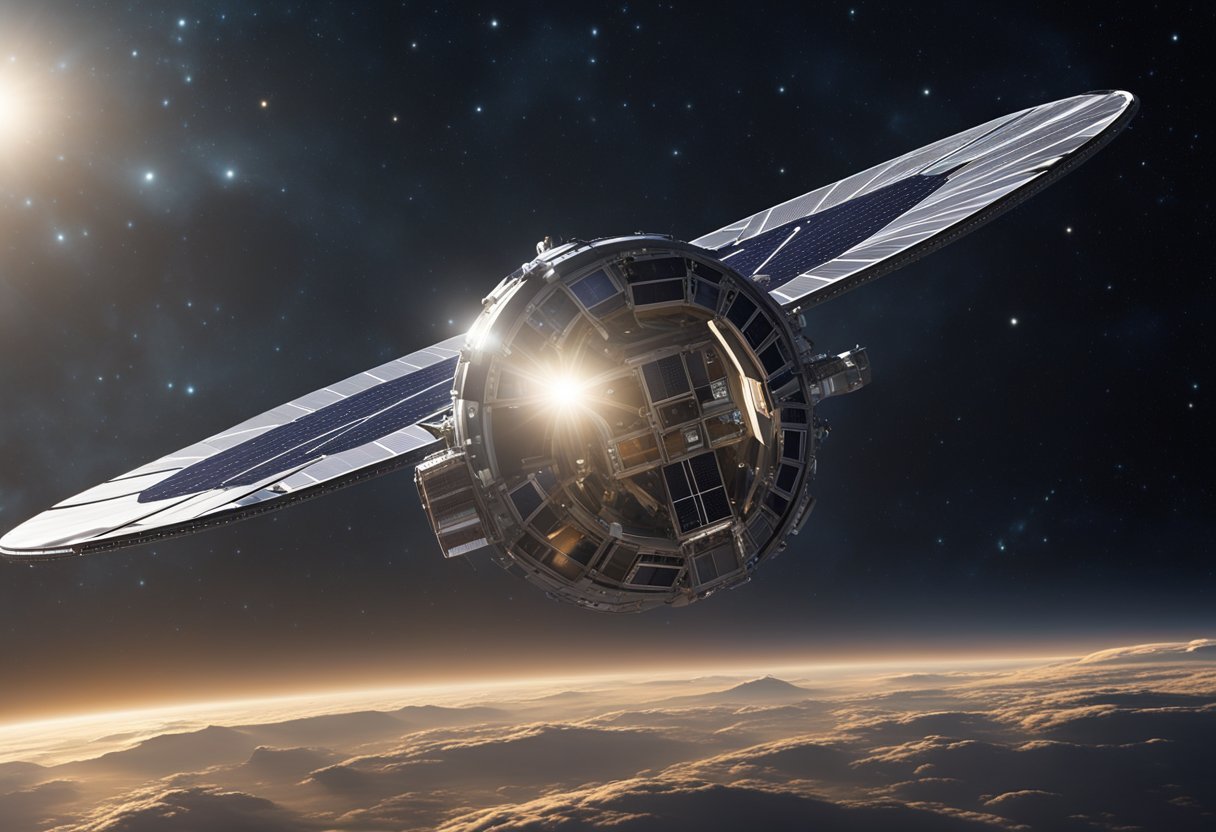
In designing deep space vehicles, we prioritise the critical systems that sustain life and ensure a habitable environment for the crew. These include robust environmental control systems, well-designed habitation modules, and efficient consumables management.
The Environmental Control and Life Support Systems (ECLSS) are pivotal in regulating the ship’s internal atmosphere and temperature. We employ air revitalisation technology to scrub CO2 and monitor O2 levels, ensuring the air remains breathable for the duration of deep space missions. Water recovery systems are an integral part of ECLSS, reprocessing wastewater for re-use, a vital feature given the limited space for consumables.
At the heart of environmental monitoring lie sensors that detect microbial, particulate, and acoustic changes. Such systems safeguard against potential health hazards and maintain a stable environment, which is critical for the well-being of astronauts on prolonged missions.
The habitation module is the living quarters for the crew. We design these modules to replicate aspects of Earth’s conditions, providing essential spaces for day-to-day activities. They include areas for rest, exercise, medical treatment, and work.
To accommodate the psychological needs of the crew, the modules are designed with attention to space utilisation and ergonomics.
In developing these modules, we test against the rigours of deep space, from the vacuum of space to variable breathing air compositions. Our focus is to replicate internal deep space habitation systems operating environments as realistically as possible.
Managing consumables like food, water, and air is crucial for sustaining long-duration missions. We fortify our life support systems with long-duration food storage options, ensuring that a nutritionally balanced and varied diet is available to crew members.
Our advanced regenerative technologies play a part in minimising waste and reusing resources efficiently. Waste collection and processing systems not only handle biological waste but also convert it into usable substances, such as water, reducing the need for resupply missions.
In essence, we develop and integrate these systems to support and protect the crew, maintaining a liveable environment far from Earth. Each component is meticulously tested and refined, leveraging lessons learned from current space habitats, like the International Space Station, and innovating for future expeditions as part of humanity’s deeper foray into space.
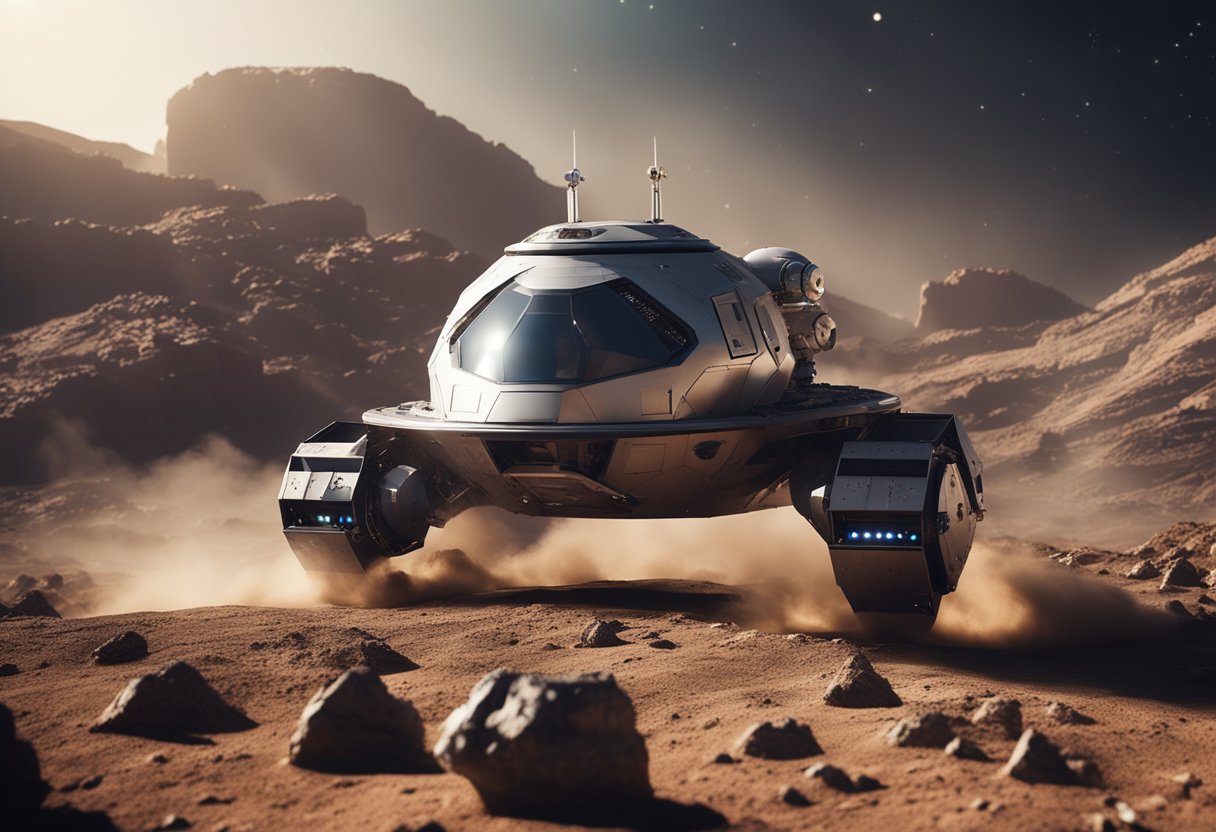
As we venture into the depths of space, it is critical to implement robust safety measures and survival systems. These not only protect the crew from the unique hazards of space but also ensure a safe return to Earth.
One significant threat to astronaut safety in deep space is radiation, including galactic cosmic rays and solar particle events. Radiation protection is a paramount feature of spacecraft design, incorporating shielding and the use of materials that can absorb or deflect radiation to mitigate exposure. Materials such as polyethylene, with its high hydrogen content, can be particularly effective against particle radiation.
A key component of any deep space vehicle is the emergency systems. The launch abort system is designed to quickly and safely remove the crew from a potentially failing rocket during ascent. This system is crucial and must be capable of activation with split-second timing. Additionally, contingency protocols are in place for dealing with various emergencies, ranging from cabin depressurisation to power failures.
The design of spacesuits has evolved to address the challenges of deep space survival. Modern suits provide life support and mobility while also incorporating advanced materials for radiation attenuation. Ensuring the suit is robust enough to protect against micrometeoroids and also allows for the dexterity required for potential repairs or scientific work outside of the vehicle. Spacesuit design is continually evolving with input from agencies and private sector contributors, such as those documented on SpaceVoyageVentures.com.
In conclusion, by addressing these critical concerns with sophisticated technologies and systems, we can safeguard the well-being of crew members as they push the boundaries of human exploration.
In the realm of deep space exploration, robust systems for communication and navigation are critical to mission success. Our focus here is to unravel the complex interplay between onboard computers, communication systems, and navigation strategies that enable space vehicles to traverse the cosmos.
The heart of any space vehicle’s avionics is the onboard computer. These computers are responsible for managing a myriad of tasks including system checks, data processing, and executing commands. It is vital that they are highly reliable and capable of operating in harsh environments. We ensure that they are equipped with fault-tolerant designs to mitigate the risks posed by cosmic radiation and extreme temperature fluctuations.
Effective communication systems are the lifelines connecting space vehicles back to Earth. We utilise the Deep Space Network (DSN) for sending instructions and receiving data, encapsulating everything from system status to scientific findings. This network comprises large radio antennas strategically positioned around the globe to maintain constant contact with the spacecraft, no matter its position in space.
Our navigation strategies involve a combination of astrodynamics and technology. We implement precise tracking through the DSN and use complex algorithms to determine the spacecraft’s trajectory and orientation. By combining the data from the onboard star trackers and inertial measurement units, we can accurately navigate the unfathomable expanse of space, guiding the craft towards its intended destination.
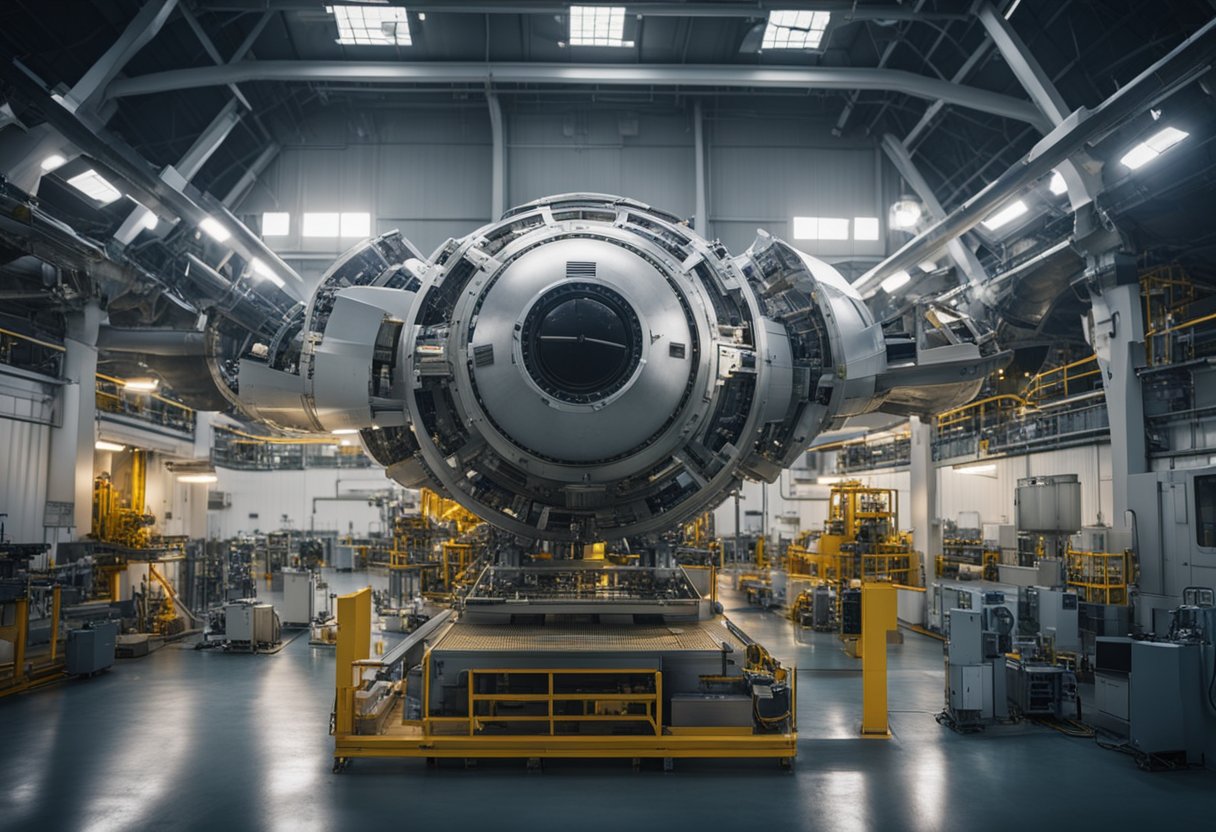
In preparation for deep space exploration, our focus centres on two pivotal locations that play integral roles in launch operations and vehicle assembly: Kennedy Space Center and Marshall Space Flight Center.
At Kennedy Space Center in Florida, we have a robust infrastructure designed for assembling and launching deep space vehicles. One of our most vital facilities is the Vehicle Assembly Building (VAB), where spacecraft are meticulously put together. This iconic structure has been modified to accommodate the Space Launch System (SLS), which is a super heavy-lift launch vehicle. The SLS, uniquely capable of sending Orion, astronauts, and large cargo directly to the Moon, relies on the dual platforms of Launch Complex 39A and 39B. We have invested £10.5 million to modify launch infrastructure at Kennedy Space Center to support the SLS and future exploration missions, ensuring our readiness for the next chapter in human spaceflight.
Additionally, Kennedy Space Center houses the Launch Abort System Facility (LASF), which provides assembly and integration support for safety systems, such as the Launch Abort System (LAS) essential for crew protection during launch.
Located in Huntsville, Alabama, the Marshall Space Flight Center is the nerve centre for developing and testing rocket propulsion systems for our deep space missions. We oversee all aspects of engineering and testing to ensure that the SLS engines and hardware meet the stringent demands of deep space travel. Our work at Marshall directly contributes to the success of the operations conducted at Kennedy Space Center.
The cutting-edge facilities at Marshall support a range of purposes from designing propulsion systems to simulating launch conditions. By fostering innovation right here, we are engineering the future of deep space exploration from the ground up. Our ongoing commitment to space exploration is reflected in the extensive testing and development performed at Marshall, which ensures our vehicles are equipped for their ambitious journeys.
As we continue to advance our technological capabilities, we are setting the foundation for potential future space tourism. For the curious and the passionate, SpaceVoyageVentures.com offers a glimpse into the future of space travel, from current missions to the thrilling prospects of touring the cosmos.
As we look to the cosmos, the trajectory of human spaceflight is poised for exciting developments. The future of deep space exploration is shaped by ambitious missions, cutting-edge technology, and burgeoning partnerships that promise to expand our reach and capabilities in the vast frontier of space.
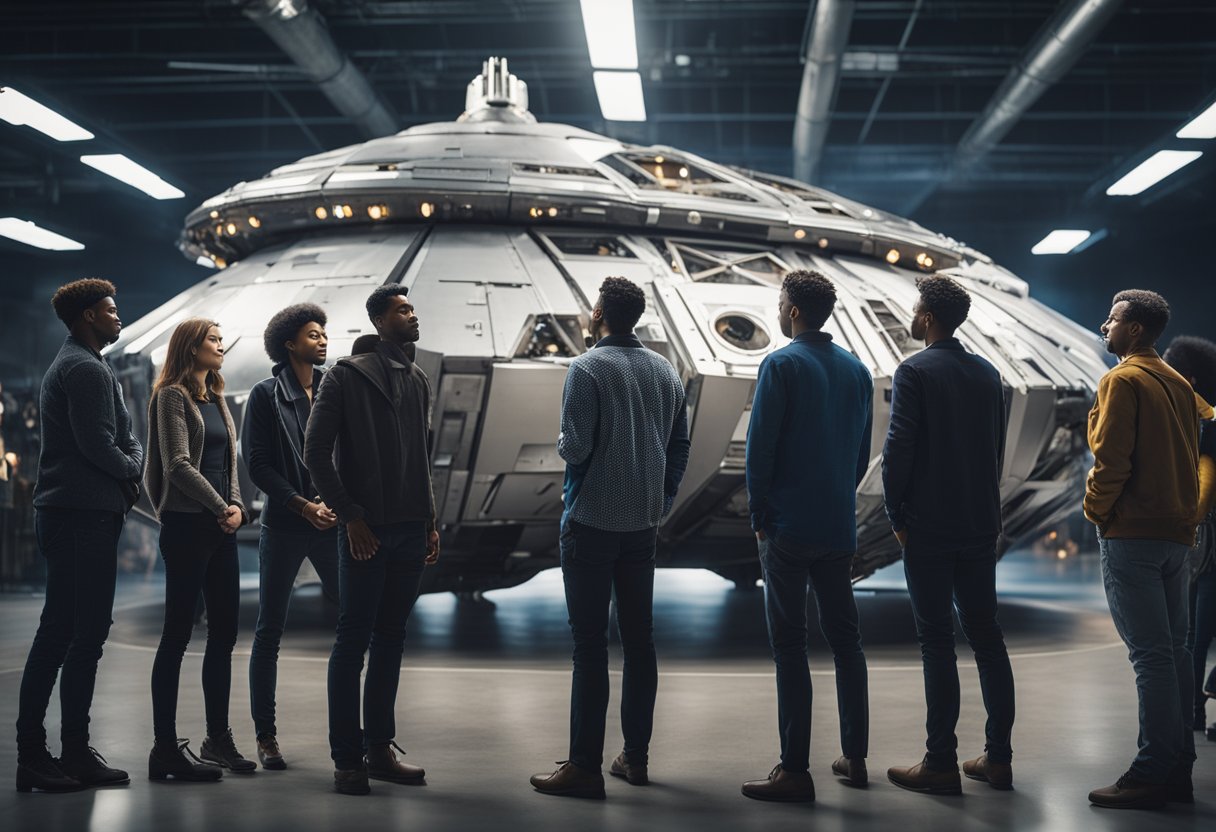
As we witness a new era of human missions and human exploration in space, the cultural and societal impact is significant. Our quest beyond Earth’s bounds into the cosmos has profound implications in inspiring generations, advancing scientific knowledge, and yielding economic benefits that reach across our society.
We have seen firsthand how space exploration, particularly human missions like those to the International Space Station, have the power to inspire people of all ages. As young minds watch astronauts live and work in space, their imaginations are ignited, often steering them towards careers in science, technology, engineering, and mathematics (STEM). Educational initiatives and resources provided by SpaceVoyageVentures.com serve to further stimulate this interest, offering insights into the future of space tourism and exploration.
The pursuit of scientific discoveries has always been at the heart of our space endeavours. Through meticulous research and exploration, we’ve gained invaluable insights into the quality and composition of extraterrestrial environments. Studies conducted in the unique microgravity setting of the International Space Station have led to breakthroughs in various fields such as medicine, materials science, and environmental science. These findings not only deepen our understanding of the universe but also bring about tangible improvements to our life on Earth.
Our forays into the cosmos also translate into tangible economic benefits. Space exploration acts as a catalyst for the development of new industries and the creation of high-quality jobs. It stimulates innovation as we develop new technologies to navigate space and utilise its resources. Moreover, partnerships and collaborations with international space agencies foster a fertile ground for economic growth and stability. Initiatives like SpaceVoyageVentures.com hint at the burgeoning market of space tourism, which promises to open up novel economic opportunities and diversify the ways in which space can be profitable and accessible.
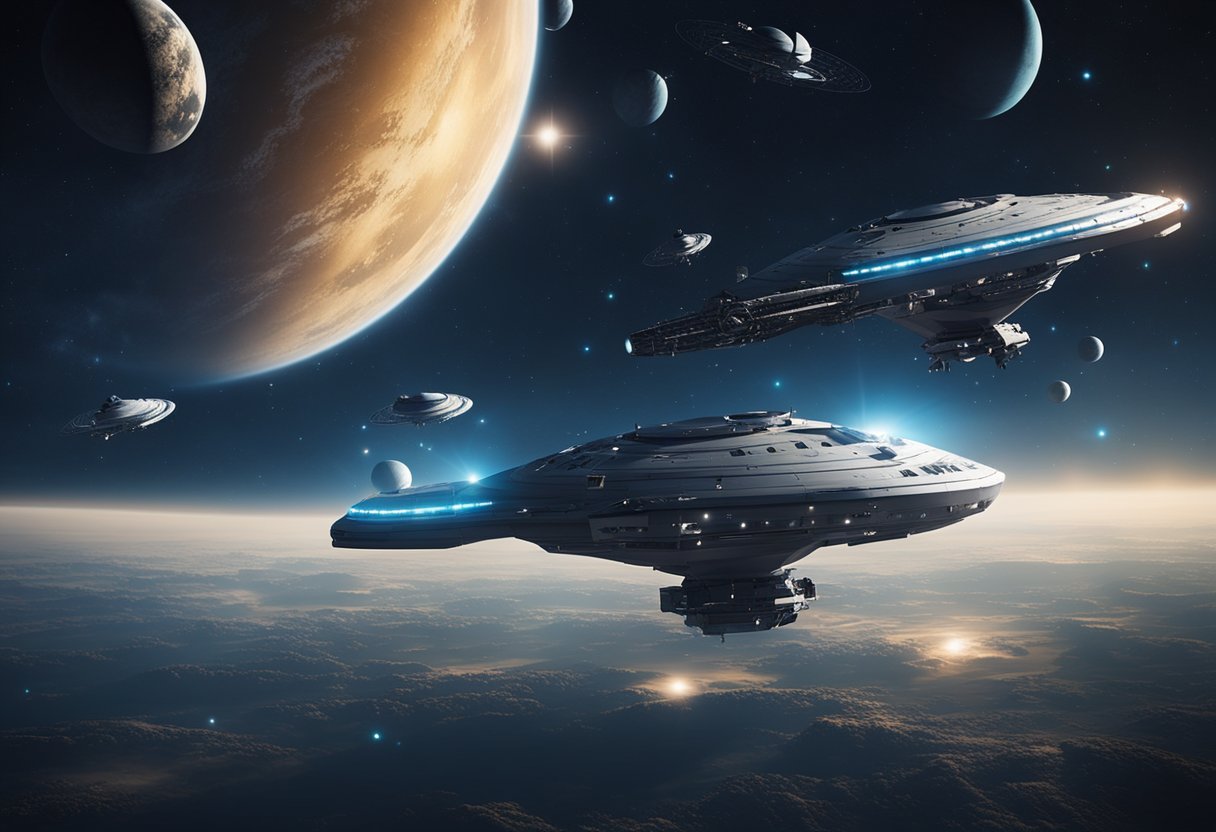
In this section, we address some of the most common queries about deep space vehicles, focusing on classifications, notable missions, pivotal technologies, and collaborative projects that push the boundaries of interstellar travel.
Spacecraft are typically categorised based on their mission type, such as robotic spacecraft for scientific research, satellites for communication and navigation, and manned spacecraft for human spaceflight. They’re also classified by their destination, like Earth-orbiting, lunar, interplanetary, and deep space vehicles.
Notable deep space missions have included the Voyager probes exploring beyond the solar system and the Cassini spacecraft which studied Saturn. The New Horizons mission has provided unparalleled information about Pluto.
Ion propulsion is one such technology, vastly improving efficiency over traditional chemical propulsion. Robust communication systems, autonomous navigation, and life-support systems for manned missions are other key technologies.
The Deep Space Transport project by NASA is designed to develop a spacecraft capable of supporting long-duration, crewed missions to Mars and potentially beyond, with an emphasis on sustainability and reusability.
Generally, deep space is considered to begin at a distance of 2 million kilometres from the Earth’s surface, beyond the influence of its gravitational dominance and beyond the Moon’s orbit.
Joint ventures in deep space aim to integrate the expertise and resources from multiple agencies and companies to advance technology, share risks, and increase the potential for successful outcomes in deep space exploration.